One of the collectibility conundrums for the first-generation F-Type is the sheer number of trims produced by Jaguar. The trims range from the Base to the SVR and were produced in the thousands. As a result, prices can vary by tens of thousands.
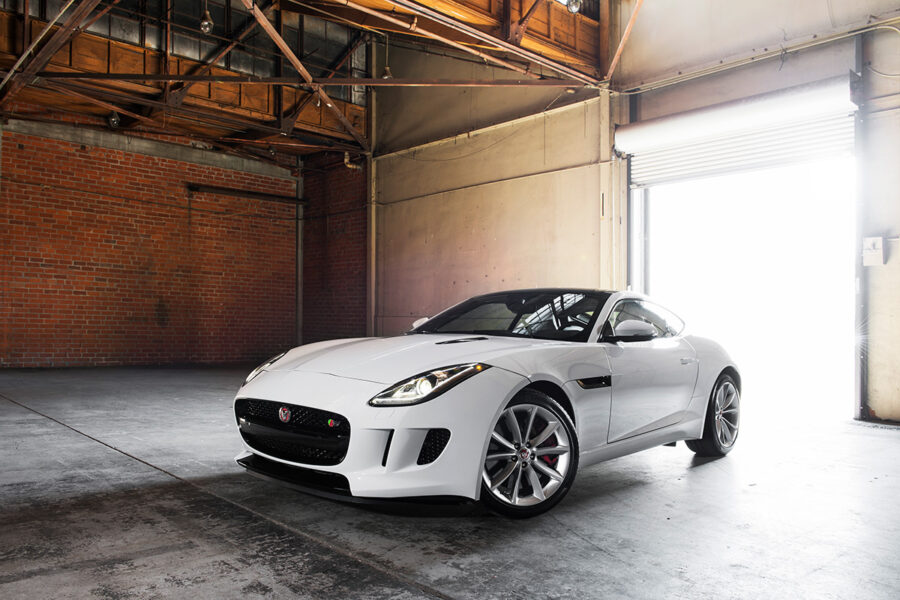
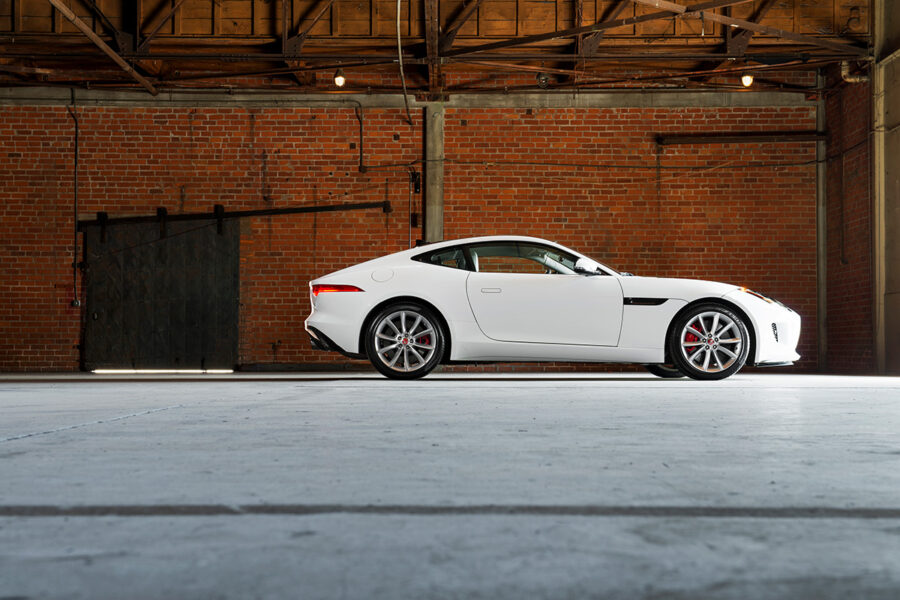
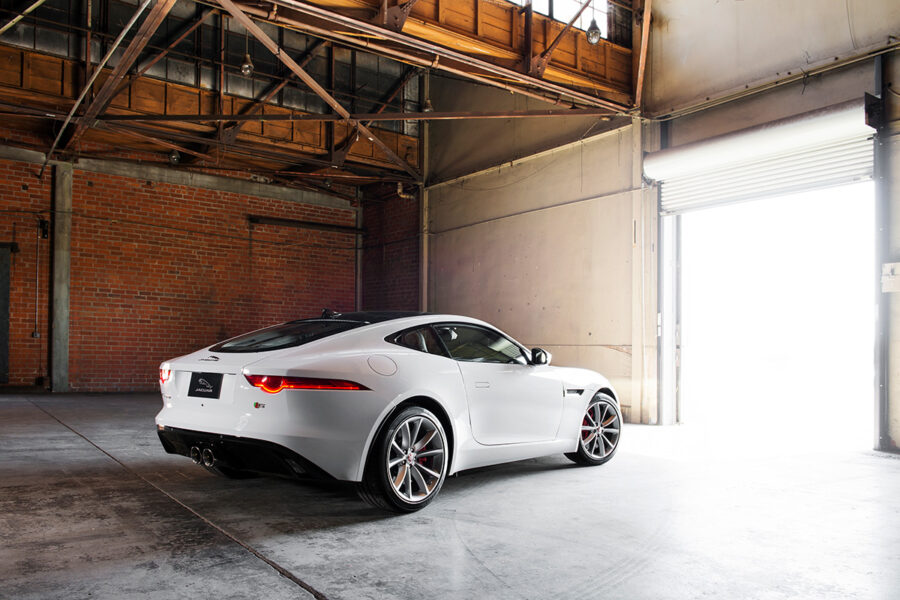
So does this mean all hope is lost for the F-Type’s future collectibility? Not quite. The manual transmission F-Type V6 Base and S introduced in MY2016 ended in MY 2019 because of low demand. According to Car and Driver, only 4% of all F-Types delivered were in the 6 speed configuration. During this time period, total F-Type US sales were 12,724 units.
If Car and Driver’s 4% figure holds true, this means Jaguar only delivered 509 units to the US. If we guess that’s split between the Base and S, that leaves roughly 255 units per model. And if that’s split between convertible and coupe, that’s only 128 cars. This would make the coupe or convertible in Base or S trim rarer than the Project 7! In actuality, more base models were probably sold than the S making this model the most rare of the F-Types (although not definitive).
Jaguar F-Type Exterior
Billed as the spiritual successor to the legendary E-Type, the F-Type is arguably one of the most notable designs of the past decade. While design is somewhat subjective, some argue that the XK is the truer design successor to the E-Type. But the XK’s overall design package lacks the same drama and finesse as the F-Type.
The front hood shows pronounced wheel well arches. They slope toward the middle of the hood then rise again with the center bulge. A nod to the E-Type, but not as pronounced. The black cross bar on the front grille a reminder of the E-Type’s chrome bar that holds the Jaguar emblem proudly in the center of the oval opening.
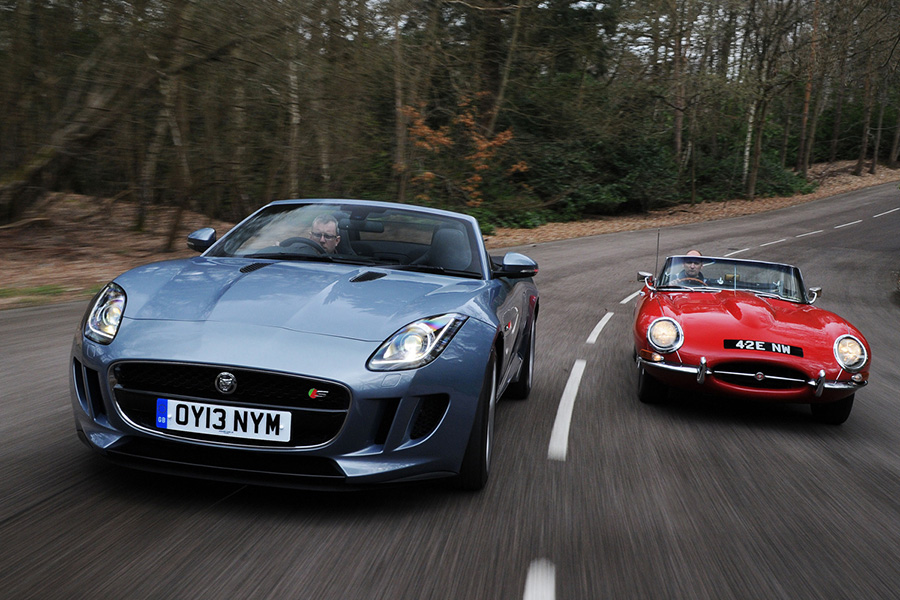
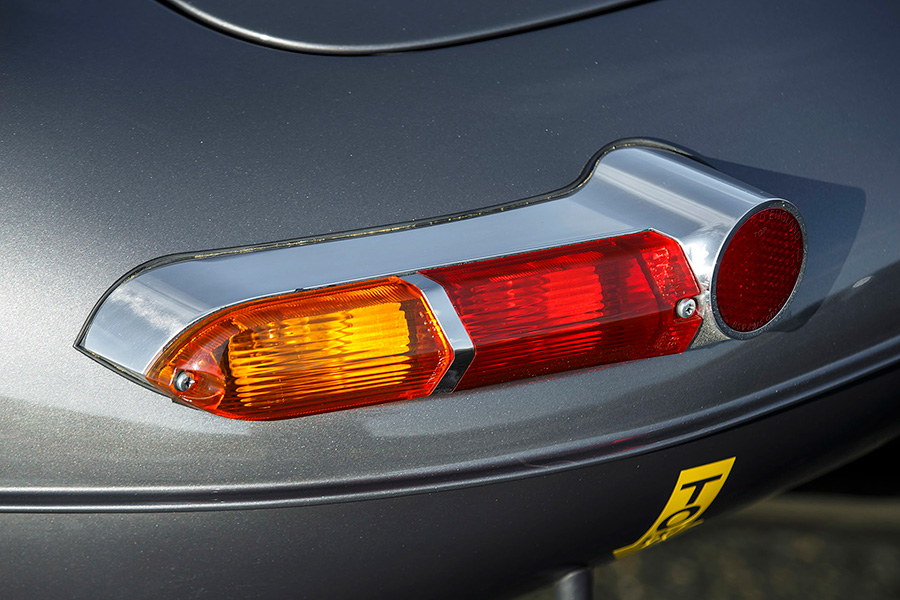

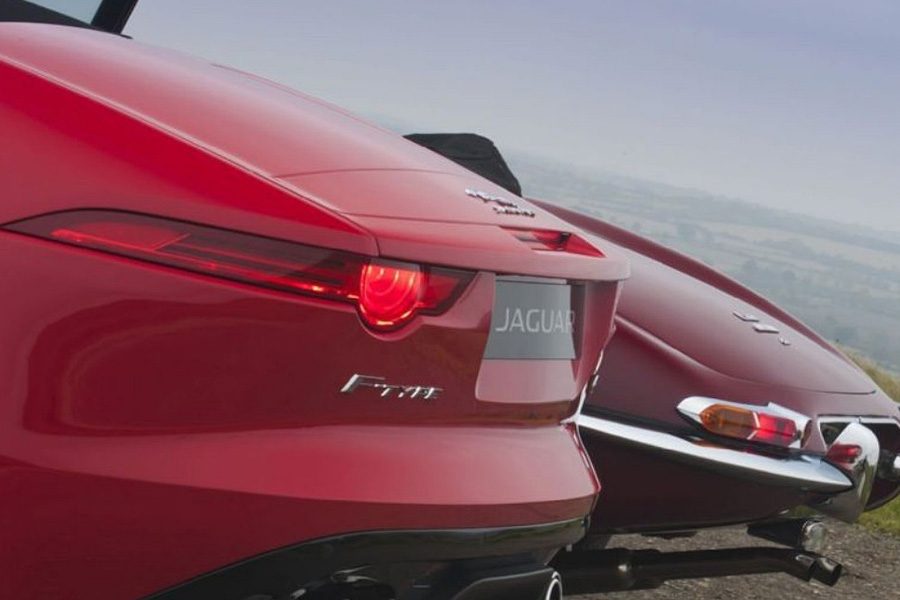
The F-Type’s profile pushes the cockpit a bit further back than the XK to give the car a similar feel to the E-Type’s sweeping lines with the long hood, raking windshield, and ending with the gently sloping rear. The flush door handles pop open with the Jaguar logo printed on an aluminum plate. It’s as though the car is greeting the occupant when unlocked. Like the E-Type, the F-Type’s rear haunches are pronounced and especially visible from the rear view.
From the back, the third brake light is elegantly integrated into the rear hatch. The rear windshield narrows towards the tail further accentuating the width of the haunches. The F-Type’s tail light shape is loosely reminiscent of the E-Type Series 1/1.5 with its thin length and half circle dip.
The last car to show such elegance in proportion is the Aston Martin from the last decade (take your pick with the Vantage, DB, Virage and Vanquish models) which is fitting given Ian Callum, the designer of the F-Type also penned the V12 Vanquish in 2001.
Jaguar F-Type Interior
The interior of the F-Type is nearly identical across the product range save some customizable options such as interior packages and seat styles. Only the SVR and Project 7 get the diamond stitched seat covers, but the sport seat shape itself is an option for any of the models.
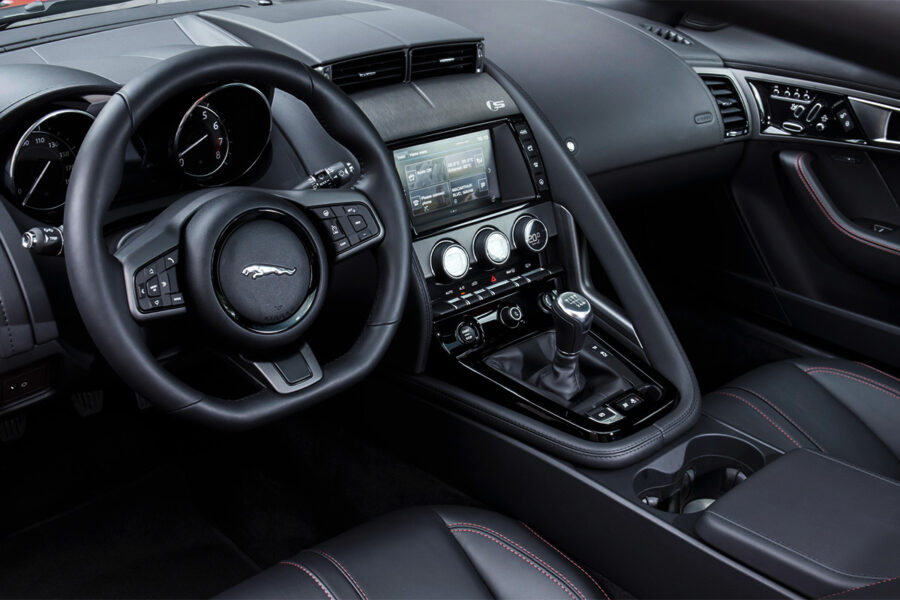
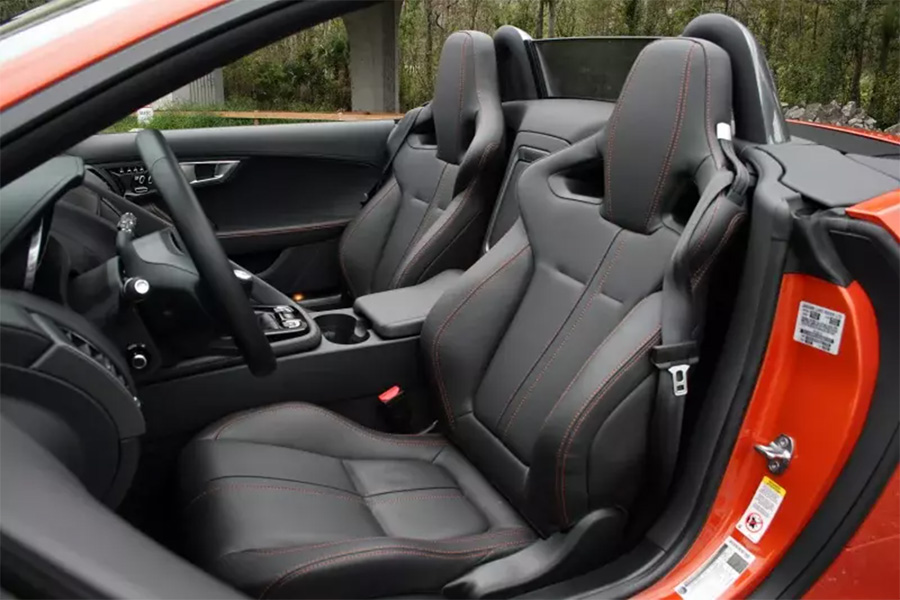
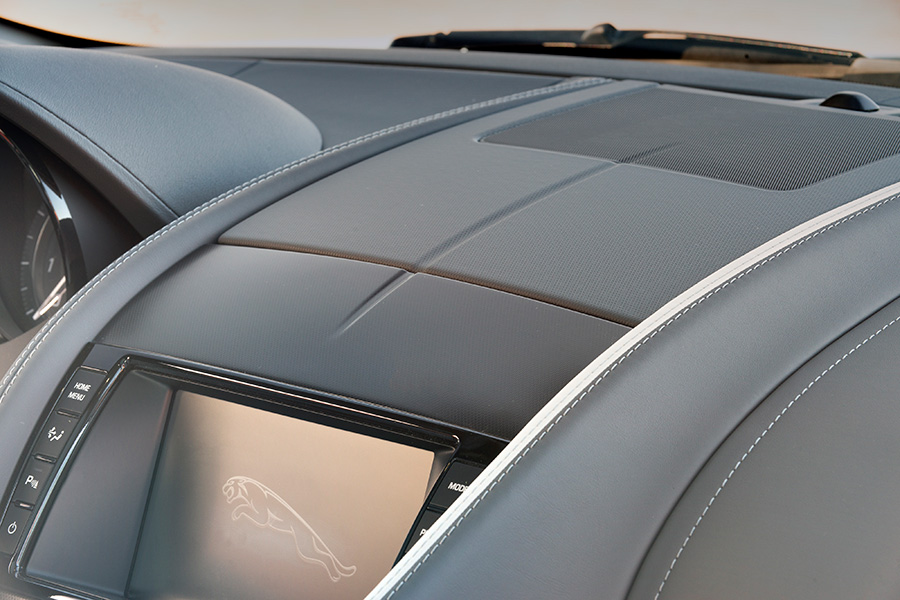
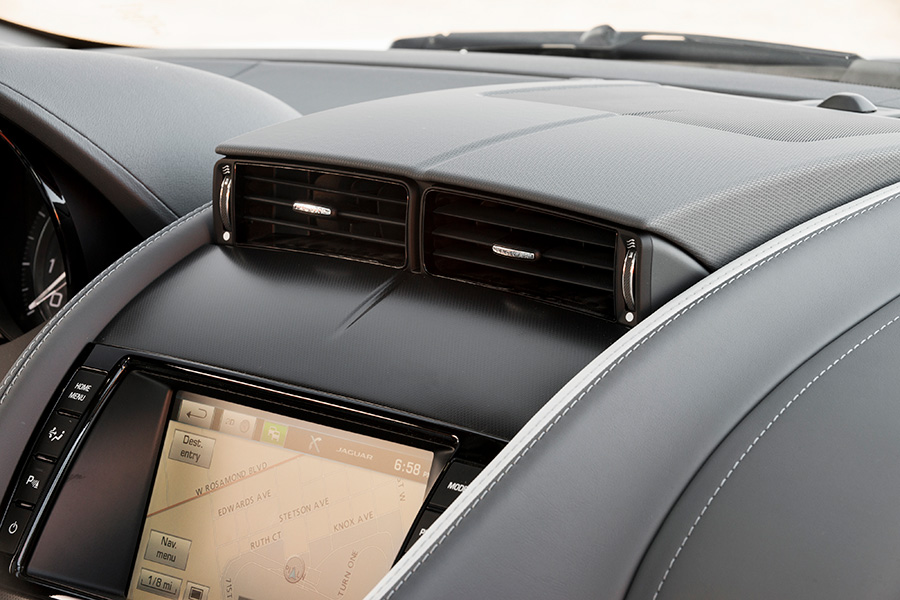
The quality of the materials on the interior are good, but not necessarily worthy of an $80k car. The leather feels finer than what you might find on an Audi while the plastic and touchscreen are not unlike something you’d find on a VW Golf at half the price. The plastic is very difficult to keep scratch free and will eventually succumb to fine swirl marks from cleaning. The control screen response time is quite slow and the interface design isn’t nearly as elegant as the rest of the car.
The interior may not be the most exciting or special, but it isn’t as lackluster as the Alfa Romeo 4C. Over the course of time, the interior may look dated, but should age gracefully.
Jaguar F-Type Mechanical
The Jaguar F-Type V6S isn’t necessarily the fastest or the sprightliest car from the mid 2010s. With a 0-60 time of 4.9 sec and a curb weight north of 3500 lbs, competitors from this time like the BMW M4 were more powerful and lighter. The V6 actually shares the same engine block as the V8 which saves JLR the need to redesign their chassis to handle two different engine sizes. What JLR saves in costs is penalized with a heavier car with the longer block, crank and oil pan. Estimates put this around 50 lbs – acceptable to the bean counters but annoying for the engineers and of course the consumer.
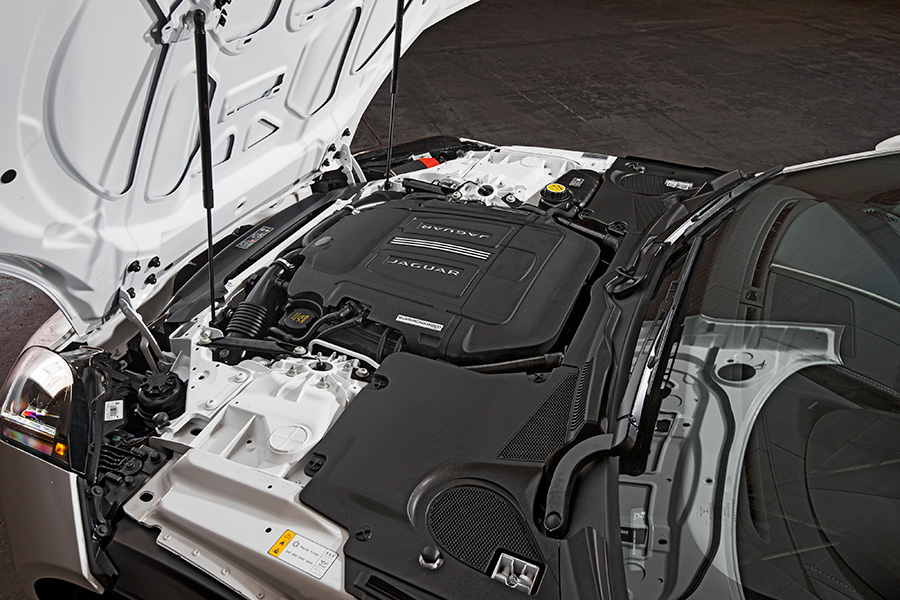
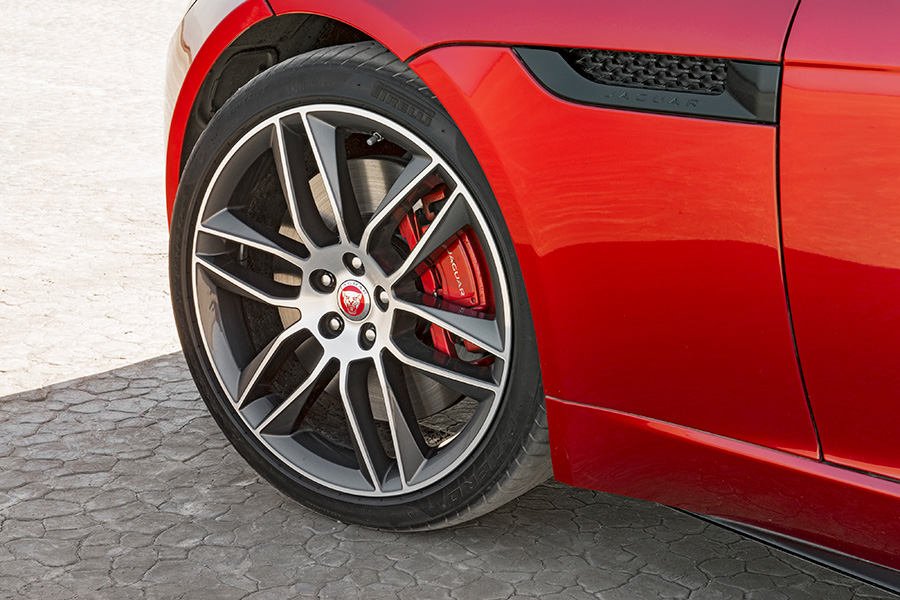
Thanks to the adaptive suspension and limited slip differential, body roll is kept to a minimum while cornering is surprisingly sharp given the car’s weight. Braking power is good with larger rotors than on the base model V6. One annoyance that will take time to acclimate is the bite point of the clutch. Because it’s very high, you might find yourself revving the engine with the clutch yet to be fully engaged.
If you’re reading this, you’re probably aware of the V6 S soundtrack with the many reviews on car sites. What you may not know is that the car has to have the active exhaust option as well as not having the K309 ECU update installed. The software changes the amount the active exhaust valves open thereby reducing the noise output most likely due to EU noise regulations. Dealers automatically installed this on earlier model cars when customers brought their cars in for servicing. It became a standard feature for MY2018. Rectifying this seems difficult as noted on Jaguar forums. So if you’re looking for one of these, you should ask if the car was maintained by JLR, and if it was, then the K309 update was most likely installed.
Jaguar F-Type Maintenance
The quality control of Jaguars as a whole has been under debate since the purchase of the brand by Tata Motors in 2008. Reliability predictions from various car news outlets have mostly been unkind while others and owners from Jaguar forums have spoken of very few problems. The F-Types do come with a 5yr/60k warranty which for some cars is still current.
As warranties expire, the hourly service cost for Jaguars should be in line with other European cars like BMW and Mercedes. The frequency or amount of work required to fix a problem is too difficult to say at this point since the oldest of these cars is from MY2014.
Jaguar F-Type Desirability
Jaguar’s heyday from the ‘40s to the ‘60s cemented the cars brand for decades past its glory days. Dependability problems in the ‘80s, ho-hum designs thereafter and shared parts with Ford cars under their ownership certainly tarnished the storied brand. With Tata Motors assuming ownership in 2008 and a fresh infusion of cash, Jaguar recognized that a new direction was necessary in order to shed its stodgy and undependable brand reputation with consumers.
While reliability has arguably improved, the design direction has definitely improved. The XK series brought a fresh new look after the aging XJS and now the F-Type has raised the design bar even further.
Collectible cars are often dictated by what preceded and proceeded it. The refreshed F-Type is just a bland evolution of the original Ian Callum design with its Mazda like front and nearly unchanged interior. It hasn’t pushed the design enough to create a distinct difference from the original. As an example, the E46 and E92 BMW M3 are both desirable classics for their own independent virtues.
Combined with manuals no longer an option on the refreshed F-Type, the V6S 6-sp will eventually be the car collectors will want. Just look at the prices of the manual Ferrari F430 and V10 Audi R8 – each selling for more than newer models.
Assessment
What makes the F-Type a future collectible is in the overall experience. It’s fast, but not blazingly. The quality of materials is good, but perhaps not the best. The car’s handing is unexpectedly good for its weight and as a GT car. Its exhaust note makes revving the engine to redline repeatedly a certainty. All these factors together combine to make for an experience that’s better than the sum of its parts.
With the impending end of Jaguar gas powered cars and no foreseeable plans for a manual, it’s only a matter of time before the F-Type starts to rise in value. At the time of this writing, the V-6 S with 20k miles can still be bought for around $45k, that is if you can find one.
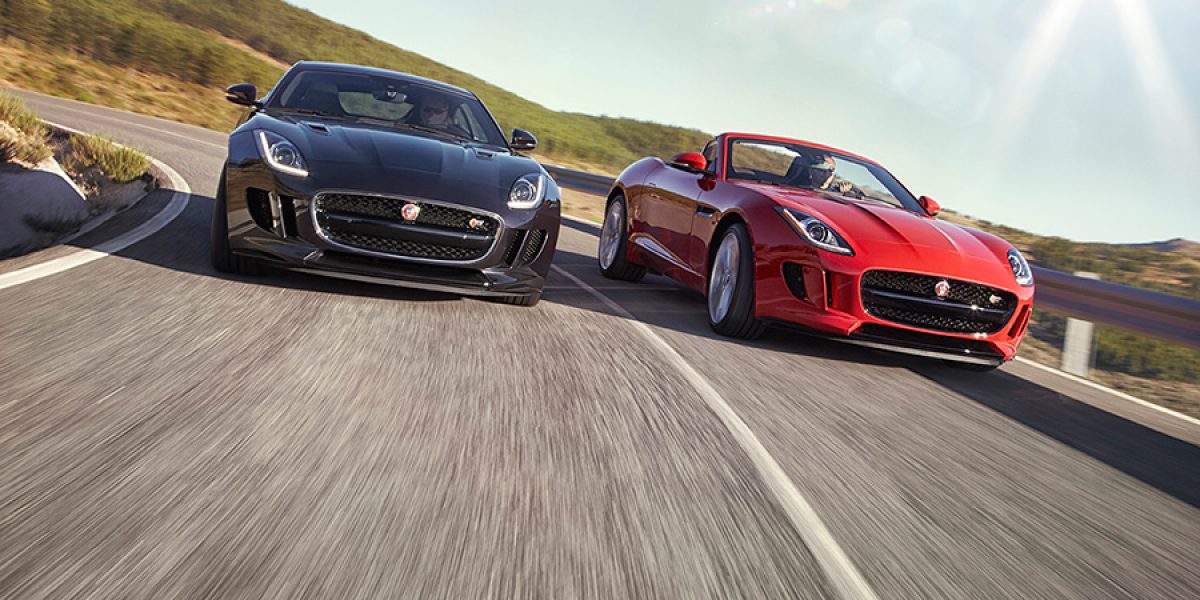










The 2017 3.0 V6 supercharged manual I bought in December 2020 is a car I intend to keep. In my opinion driving a manual is the ultimate experience as I sold a 3.6 XJ-SC manual to make room for my latest acquisition. Since purchasing the car I have replaced corroded brace struts and replaced the backbox due to faulty active exhaust valves. Fortunately this work was covered by the warranty. I loved driving my XJS due to the unique shape and was initially concerned buying a modern Jag, but after having this car for a short period I still have a great feeling driving this car as I did with its predecessor. This car is expensive to run but as far as I am concerned it is worth it.
I agree. I bought my 6 speed coupe in 2019 for under 40K and prices are appreciating. This is a very good driving car with very stable road manners. Maintenance is average and not dissimilar from my 1999 Carrera, but much less then the Ferraris I have owned. The F is a beautiful and timeless design and the rarity of the 6 speed, whether base or S, will make it a future collectible. What else in the entire sports car market comes even close at current prices? Certainly not Porsche. Tatra did skimp on rust proofing so inspect before you buy in areas were roads are salted. There are certain problem area (clutch master and slave) but fixes are not crazy expensive. The interior wears well and is elegant and comfortable. Wry good driving position. The short throw shifter is good but not well placed, too near some dash buttons, The info system is dated but useable, steering and clutch are good. Brakes are strong but very sensitive to pressure which takes getting used to. Exhaust sound is great. Rear visibility is limited after the spoiler activates. AC/heat is excellent. Gas mileage is average. Tire wear is average. All around I would rate the car as a very good GT, not too dissimilar to my Maranello ( Ferrari fans are going to scream, but what I say is true)- but she is not a sports car due to her weight. All in all excellent value in a future classic.